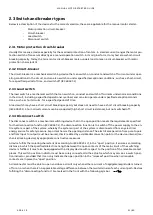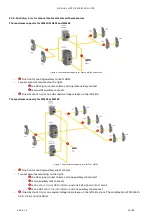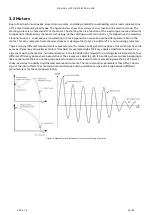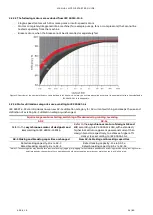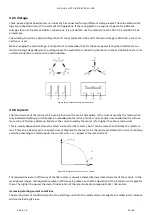
MANUAL MOTOR STARTER GUIDE
APRIL 19
32/80
3.2.3 International motor efficiency standards and regulations
Figure 14: International motor efficiency standards and regulations.
Since the validation of IEC 60034-30:2008 and its refined version IEC 60034-30-1:2014, a worldwide energy efficiency
classification system has existed for low voltage three-phase asynchronous motors. These international standards
have been created to enable and increase the level of harmonization in efficiency regulations around the world and to
also cover motors for explosive atmospheres.
IEC 60034-30-1:2014 defines International Efficiency (IE) classes for single speed, three-phase, 50 Hz and 60 Hz in-
duction motors. The efficiency levels defined in IEC 60034-30-1 are based on the test method specified in IEC 60034-
2-1:2014. Both standards are part of an effort to unify motor testing procedures with CSA390-10 and IEEE 112 stand-
ards as well as efficiency and product labeling (IE) requirements to enable motor purchasers worldwide to easily
recognize premium efficiency products.
To promote transparency in the market, IEC 60034-30-1 states that both the efficiency class and efficiency value
must be shown on the motor rating plate and in the product documentation. The documentation must clearly indi-
cate the efficiency testing method used as different methods can produce differing results.
3.2.3.1 Minimum energy performance standards
While the IEC as an international standardization organization sets guidelines for motor testing and efficiency clas-
ses, the organization does not regulate efficiency levels in countries. The biggest drivers for mandatory Minimum
Energy Performance Standard(MEPS) levels for electric motors are global climate change, government targets to
curb CO
2
emissions and rising electricity demand, especially in developing countries. The entire value chain, from the
manufacturer to the end user, must be aware of the legislation in order to meet local requirements, to save energy
and reduce the carbon footprint.
Harmonized global standards and the increasing adoption of MEPS around the world are good news for all of us.
However, it is important to remember that harmonization is an ongoing process. Even though MEPS are already in
effect in several regions and countries, they are evolving and differ in terms of scope and requirements. At the same
time, more countries are planning to adopt their own MEPS regulations. A view of existing and coming MEPS regula-
tions in the world can be seen on the world map above.




